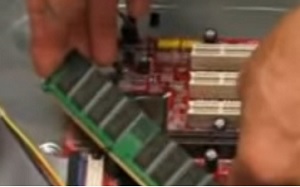Solutions, Prevention & Control of Electrostatic Discharge
Introduction to Solutions, Prevention & Control of Electrostatic Discharge
In this article we will discuss short about solutions, prevention or protection and control of electrostatic discharge (ESD) —Omazaki Consulant is an ESD solution consultant that provides static electricity and electrostatic discharge (ESD) assessment, evaluation, audit, solutions (elimination or countermeasure), prevention and control program consulting services in Indonesia. Contact us by sending an email to cs@omazaki.co.id or by filling in the form in contact.
This article is a series of several related articles:
- Static electricity and Electrostatic Discharge (ESD) – Basic
- Causes and Effect of Electrostatic Discharge
- Solutions, Prevention and Control of Electrostatic Discharge
———————————————
Standard Related to Electrostatic Discharge (ESD)
Most common applicable standard related to electrostatic discharge (ESD) are:
- ANSI/ESD S20.20 — ESD Association Standard for the Development of an Electrostatic Discharge
Control Program for – Protection of Electrical and Electronic Parts, Assemblies and Equipment (Excluding Electrically Initiated Explosive Devices) - IEC 61000-4-2 — Test Standard for Electrostatic Discharge (ESD) Immunity
———————————————
 Basic Principle of Static Control
Basic Principle of Static Control
The task of designing and implementing ESD control programs becomes less complex if we focus on just six basic principles of static control. In doing so, we also need to keep in mind the ESD corollary to Murphy’s law, “no matter what we do, static charge will try to find a way to discharge.”
EOS/ESD Association, Inc. suggested focusing on just six basic principles in the development and implementation of effective ESD control programs in electronic manufacturing:
- Design in protection
- Define the level of control
- Identify and define the electrostatic protected areas (EPAs)
- Reduce electrostatic charge generation
- Dissipate and neutralize
- Protect products from ESD with proper grounding or shunting
At the facility level, our electrostatic discharge (ESD) solution and control efforts concentrate on the last five principles.
1. Design In Protection
The first principle is to design products and assemblies to be as resistant as reasonable from the effects of ESD. This involves such steps as using less static sensitive devices or providing appropriate input protection on devices, boards, assemblies, and equipment
2. Define the Level of Control Needed in Your Environment
What is the most sensitive or ESD susceptible (ESDS) item you are using and what is the withstand voltage classification of the products that you are manufacturing and shipping? In order to get an idea of what is required, it is best to know the Human-Body Model (HBM) and Charged-Device Model (CDM) sensitivity levels for all devices that will be handled in your facility. ANSI/ESD S20.20 and IEC 61350-5-1 define control program requirements for items that are sensitive to 100 volts HBM and 200 volts CDM. With proper documentation and objective evidence, both standards allow the requirements to be tailored as appropriate for specific situations.
3. Identify and Define the Electrostatic Protected Areas (EPA)
Per Glossary ESD ADV1.0 an ESD protected area is “A defined location with the necessary materials, tools and equipment capable of controlling static electricity to a level that minimizes damage to ESD susceptible items”. These are the areas in which you will be handling ESDS items and the areas in which you will need to implement the basic ESD control procedures including bonding or electrically connecting all conductive and dissipative materials, including personnel, to a known common ground.
4. Reduce Electrostatic Charge Generation
If projections of ESD sensitivity are correct, ESD protection measures in product design will be increasingly less effective in minimizing ESD losses. The fourth principle of control is to reduce electrostatic charge generation and accumulation in the first place. It’s fairly basic: no charge – no discharge. We begin by eliminating as many static charge generating processes or materials, specifically high-charging insulators such as common plastics, as possible from the EPA work environment.
5. Dissipate and Neutralize
Because we simply can’t eliminate all generation of electrostatic charge in the EPA, our fifth principle is to safely dissipate or neutralize those electrostatic charges that do occur. Proper grounding and the use of conductive or dissipative materials play major roles. For example, personnel starting work may have a charge on their body; they can have that charge removed by attachment to a wrist strap or when they step on ESD flooring while wearing ESD control footwear. The charge goes to ground rather than being discharged into a sensitive part. To prevent damaging a charged device, the magnitude of the discharge current can be controlled with static dissipative materials.
6. Protect Products
Our final ESD control principle is to prevent discharges that do occur from reaching susceptible parts and assemblies. There are a variety of ESD control packaging and material handling products to use both inside and outside the EPA. One way is to protect ESDS items with proper grounding or shunting that will “dissipate” any discharge away from the product. A second method is to package, store, or transport ESDS items in packaging that is low charging and conductive/dissipative so it can dissipate charges when grounded.
———————————————
Best Practices of an Effective ESD Control Program
The following are the best practice steps that have been applied in the electrostatic discharge prevention and control program. They are:
- Research and consult with experts
- Identify sensitive work areas
- Identify the sources of ESD within work areas
- Establish the level of protection required for each work area
- Develop a plan
- Institute static protection solutions
- Build teams and train the staff
- Maintain the program and system
———————————————
 Equipment for Preventing Electrostatic Discharge
Equipment for Preventing Electrostatic Discharge
Three primary equipment are necessary to prevent electrostatic discharge (ESD) in manufacturing:
- Electrostatic wrist and heel straps for tool operators
- Electrostatic-safe tools
- Anti-static floor mats




Comments
Post a Comment